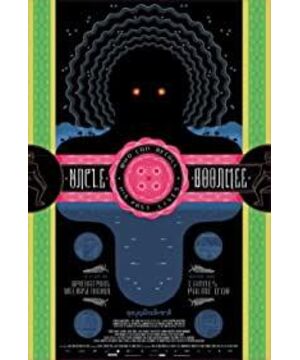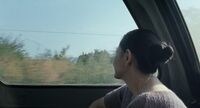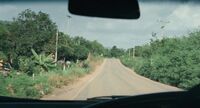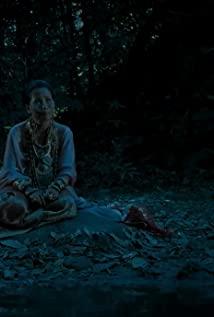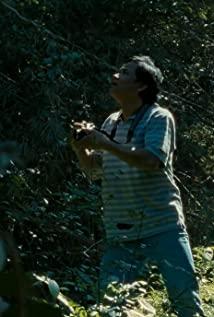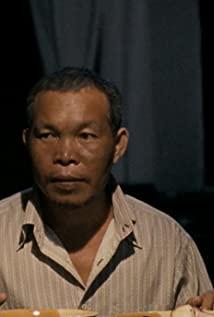Many times it is an empty shot, but it is not. The next shot tells the audience that there is still someone watching. There is such a shot in Hou Xiaoxian's "The Man from the Wind Cabinet", and not only that, he also made this design particularly prominent. At the beach, four silly brothers danced, and the waves patted behind them. Then cut it off and went into the room, where a girl was looking at them. Originally the audience was watching, objective perspective, fixed scene, it was narrative, suddenly the stroke of the pen changed, but now the point of view belongs to another. The director threw the audience out of the movie with the next shot. Outside of the movie, the audience takes their previous memories to make another perception of what they have seen. We may be able to understand the meaning of "recalling past lives" in this sense. The introduction that appears in the title is a near-perfect passage that I have seen. The first is to look at a buffalo. A self-certification about slow movies is to ask: "Are you really watching it? Have you really watched it?" If Cai Mingliang shoots Li Kangsheng who is eating a box lunch for ten minutes. Some viewers are dissatisfied, and some defenders will jump out: "Have you really seen someone eat a box lunch? Are you really watching it?" Thinking of going to see "The Seventh Seal" at the previous year's film festival, early stage , Very sleepy. Wake up, the movie is almost finished, and the protagonists have begun to dance. The audience collectively wanted to clap their hands when it was over. Especially after the master's work, the applause was particularly righteous and magnificent. That day, I remember sitting next to a pair of elderly people. This is a common sight in the morning scene. They also clapped their hands, stood up and walked around and cursed: "What kind of shit!" Heroic, thinking that if you can maintain this state when you are old, you are also very proud of it. But I still have to say that the audience may not have actually seen the buffalo. Next, the cow in Apichatpong is very unusual, very handsome, and extremely spiritual. He used a nearly faint blue luster to pat the buffalo's black skin. Later, Barry Jenkins's "Moonlight Boy" used blue to shoot black people, and Oscar knelt directly. But I increasingly feel that the latter is at best an exotic product, but in the final analysis it is still obsessed with people. "Uncle Bumi" has fewer obsessions like this. People are not always human. Being a cow, a fish, or a god, all have their own happiness and pride. Many of the things in the past and present are in the category of chance. Let's also talk about the problem of knowing cattle. First, it’s on the experience level. Whether it’s a good lens or a good lens, it’s very spiritual in itself. The second aspect is knowledge. We can see the shape of the cow's body and the cow's head through the silhouette, observe its running and resting state in two shots of moving and static, and finally glancing at the details of its face through the branches, and the pair of sighs. Human horns. Look at it step by step, The original water buffalo already has the power of a totem, but in the end, the audience did not know what to call it, but was in awe. On the other level, Apichatpong hopes that the audience will empathize with the cattle. In the same situation, it is easy to understand if the cow is replaced with a bound person. The lens language tells how the driver escaped. Use the panoramic view to explain the fact that it is tied up, and then close-up to enhance empathy with the audience, while guiding the audience to look in the direction it is looking at. The subjective lens is the object it wants to escape from. They are making a fire, temporarily neglecting to take care of them, a chance to escape. The audience saw how it struggled, saw the knot break free, and it fled into the dense forest. The meanings of these two layers are at the same time. On the one hand, as the object to be watched, on the other hand as the action protagonist of a plot, what they have in common is the audience's confirmation of the buffalo's spirituality. Apichatpong is using images to complete a psychic. And there is a question that puzzles us: why did the buffalo stop? All this did not turn into a tense chase and escape, but a silent confrontation. In the picture divided left and right by the big tree, people and cows stand quietly in two places. This scene reminded the audience of the famous cake-breaking passage in "The Great Master". But now, the confrontation between man and cow is more stable, there is no dazzling things, no words, and the strength is inside. But we have to ask: why did the buffalo stop? It wouldn't be a problem at first, just like we wouldn't be confused why Hou Xiaoxian wanted a group of four to dance on the beach. This is because a girl is watching. The answer is the same. It is further related to the details of the buffalo's face taken in the latter lens, which is a lens about looking at each other once. The reason why the buffalo stopped was that it saw the ghost monkey. If people don't come and drag it away, the ghost monkey will wait for the opportunity to move. The ghost monkey seems to be related to the voice of a movie. The stationary figure is viewed on a tripod, and the walking figure is viewed by hand. From the perspective of film history, the former is high-voiced, while the latter is low-voiced. Another aspect of liberation is also depravity. Apichatpong gave the whispered film language a sense of humanity. When Uncle Bumi entered the cave and searched for himself, it was the low point of the whole film's voice. Aunt Zhen's stump gave the road a sense of martyrdom. In the woods before entering the cave, both fixed and handheld lenses appeared. One possible interpretation is that the fixed lens is a group of ghost monkeys, and they have already sensed Bumi's weakness. For the handheld camera, the most obvious are the two extremely low camera overhead shots and a slightly downward angle to Bumi's back heel. It may well be Posson's perspective, he is protecting his father through the dense forest. The tremor in the hand is the part of the human nature under the appearance of the Bosong Beast, the so-called "care is chaos." Think so The basis is that the back and the lens came to the end, the camera stopped and watched Bumi walk away, disappearing into the fog. By then they had reached the entrance of the cave. Secondly, we saw a ghost monkey coming out of the cave, and the group of ghost monkeys was watching in the forest, so we can conclude that the former is Posson. There are many levels of life. Each level is high-sounding, just like the calm and watery appearance of daily life. However, trekking and crossing require trembling to complete, and a handheld camera is required to follow continuously. After the journey, the two levels of light and darkness clearly reveal the boundaries. Here and there, the movement of traversal requires tremendous spiritual power, even if its promise does not always rise. Another aspect of liberation is depravity. Api Chabang said that after watching Hou Xiaoxian’s movies, he fell asleep and woke up to start shooting himself. Then tens of thousands of spectators watched Abang's movie and fell asleep in a state of almost coma. The one who had been holding back and had wide-eyed with all kinds of purposes, suddenly realized that he had been stolen by the Sleeping God within an hour. Maybe this is mysticism. And the great Uncle Bumi is not our uncle after all. It is always good to be stranger if you are a pro.
View more about Uncle Boonmee Who Can Recall His Past Lives reviews


